Prune a Tomato Plant and remove Suckers step by step: The best tricks
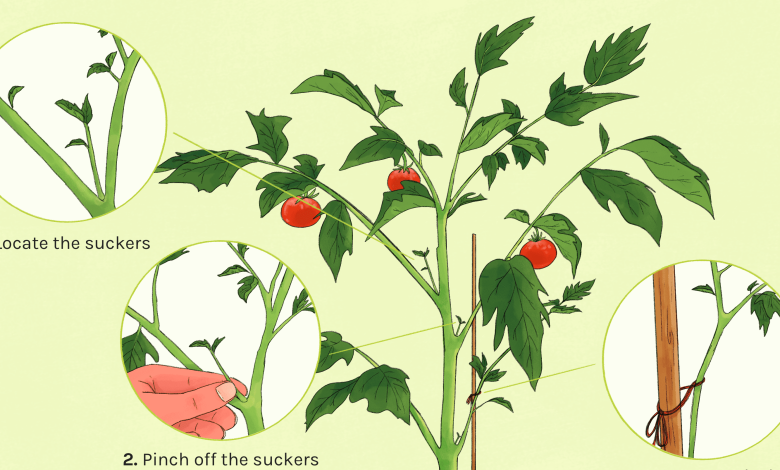
Hello to all agrohuerters! In today’s article we are going to explain how to prune a tomato plant. We have already talked in previous articles about pests, diseases and other problems of tomatoes, such as rotten ass or tomato cracking, and about tips for growing organic tomatoes in the garden.
As we have seen, one of the recommendations for the care of tomato plants is pruning and removing suckers from the tomato, one of the main tasks of tomato cultivation.
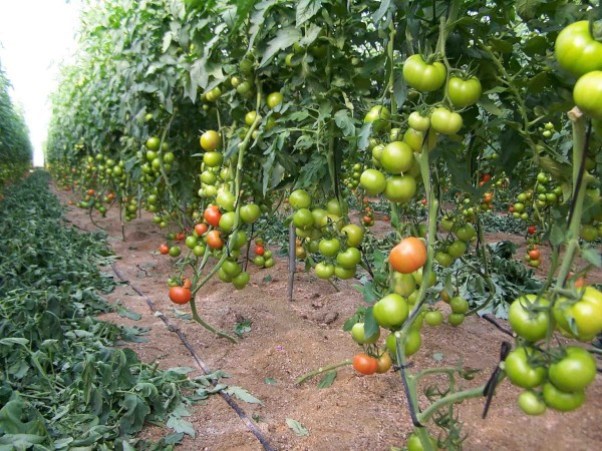
WHY SHOULD YOU PRUN A TOMATO PLANT?
The objective of pruning is different depending on the species of tomato that we have. On some occasions, such as cherry tomatoes, we are interested in having many small tomatoes.
However, other times we want the tomatoes to be bigger. To do this, we will cut in some specific areas, which will be explained below, to redirect the nutrients assimilated by the plant towards the tomatoes.
Leaf pruning and shoot pruning
Leaf pruning or stripping consists of removing the oldest or most damaged leaves from the bottom. Thanks to this practice, greater ventilation, uniformity and coloration of the fruits are achieved.
Shoot pruning or clearing is based on removing shoots (usually called suckers). The suckers appear in the axillary part of the stem as shown in the following image.
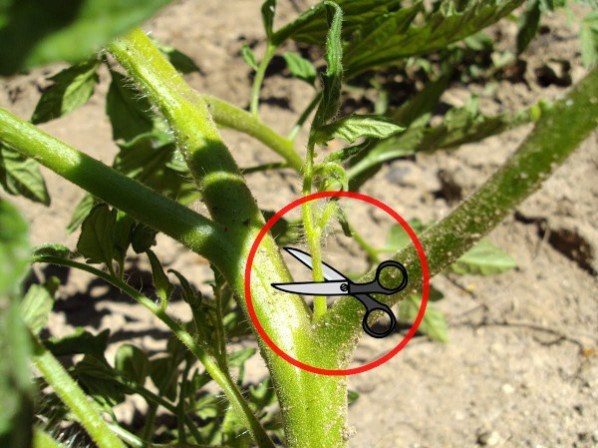
In both cases, pruning must be done at the right time on a frequent basis. It is recommended to cut the shoot when it measures approximately 5 cm. If the shoot is allowed to grow too much, when we cut it, the risk of suffering from a disease will increase.
Sometimes we can take advantage of the suckers that we have cut to obtain a new tomato plant. We simply have to plant the sucker and you will see how in a few days it takes root.
HOW TO PRUN A TOMATO PLANT AND REMOVE THE SUCKERS
A tomato plant can be pruned mechanically (with disinfected scissors) or manually. It is essential not to prune when the plants are wet as there is a greater risk of introducing a disease. If we manage to carry out all these steps well, we are sure to have some good tomatoes in the salad!
1. A different pruning for each type of tomato
The first step in pruning our tomato plants is to find out what variety we are growing. As you know, there are many varieties of tomato, of various sizes, colors and shapes. However, we can classify them into two large groups: determinate and indeterminate tomatoes.
Determinate tomatoes are usually more compact and bushy. They stop growing when they reach adulthood, that is, they have a growth limit. An important characteristic is that they bear all their fruit at the same time (the entire harvest will have to be done in one or two weeks). These varieties are recommended when we have little space or want tomatoes for canning. They do not usually need pruning. Some of the best known varieties are: marmande tomato, large river tomato, roma tomato, cherry gold nugget and others.
Indeterminate tomatoes are unlimited growers, so they need to be controlled by removing suckers and cutting off the top of the stem when it reaches a considerable height. They need a stake to be able to support themselves and the tomatoes come out in stages throughout the season. They are highly recommended if we want tomato throughout the season. Some of the best known varieties are: lots of honey tomato, beef heart tomato, black cherry and others.
2. Find and remove suckers from the tomato plant (axillary buds)
As we have seen previously, in those tomatoes with indeterminate growth, suckers must be removed. Suckers are small shoots that appear just where the branch meets the stem. The reason for removing them is because if they are allowed to grow, they steal energy from the plant, causing it to produce fewer fruits.
I leave you a video where you can learn to identify suckers in a very simple way:
3. Prune tomato branches to leave a single guide
The objective is to always leave, as seen in the image, a single branch or guide that grows vertically and from which the secondary branches with leaves and flowers will emerge. To do this, you have to choose the best branch of the main stem (image 2) and eliminate the rest. When this secondary branch (which is now the main stem) has grown enough, we will do the same again: we will cut it and let one of its strongest branches continue to grow (image 3).
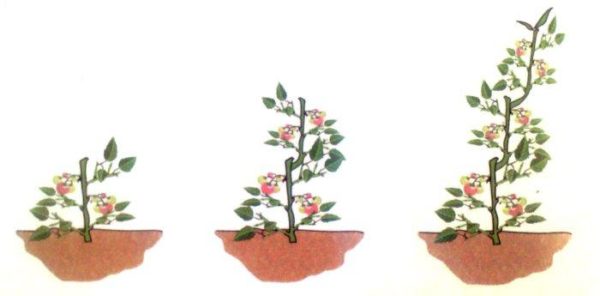
3. Remove the leaves below the first flowering branch
This practice will help make our plant stronger and more resistant. In addition, we will not waste the plant’s nutrients on unnecessary shoots.
In the following drawing you can see how this cutting of the leaves should be made:
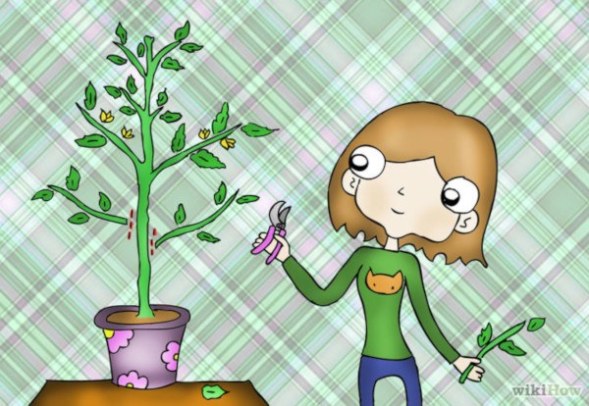
4. Tear off the yellow leaves of the tomato
When you see yellow leaves on your tomato plants, especially in the lower part, you must pull them out so that your plant does not waste energy and protects itself from diseases.
5. Cut the top of the stem at the end of the season
It will be necessary to cut the upper part of the stem of the plant to make the best use of the last buds of the season. In this way we will allow the nutrients to concentrate in the tomatoes.
I hope you liked the article and that it helps you to get some delicious tomatoes! As you have seen, pruning a tomato plant is very simple. Also, you can write us your experiences, doubts or send us photos in the comments. We will be happy to answer you.
Have a nice day

![Photo of Durillo: [Cultivation, Irrigation, Care, Pests and Diseases]](https://www.complete-gardening.com/wp-content/uploads/2022/08/durillo-cultivation-irrigation-care-pests-and-diseases-390x220.jpg)
![Photo of Why is my Pumpkin NOT producing Fruit? [Causes and Solutions]](https://www.complete-gardening.com/wp-content/uploads/2022/08/why-is-my-pumpkin-not-producing-fruit-causes-and-solutions-390x220.jpg)
![Photo of What diseases and pests attack the cherry tree? [Identify and Treat]](https://www.complete-gardening.com/wp-content/uploads/2022/08/what-diseases-and-pests-attack-the-cherry-tree-identify-and-treat-390x220.jpg)
![Photo of Physalis: [Cultivation, Care, Pests and Diseases]](https://www.complete-gardening.com/wp-content/uploads/2022/08/physalis-cultivation-care-pests-and-diseases-390x220.png)